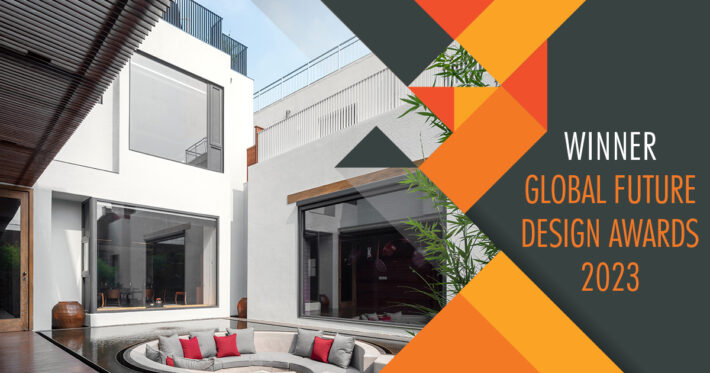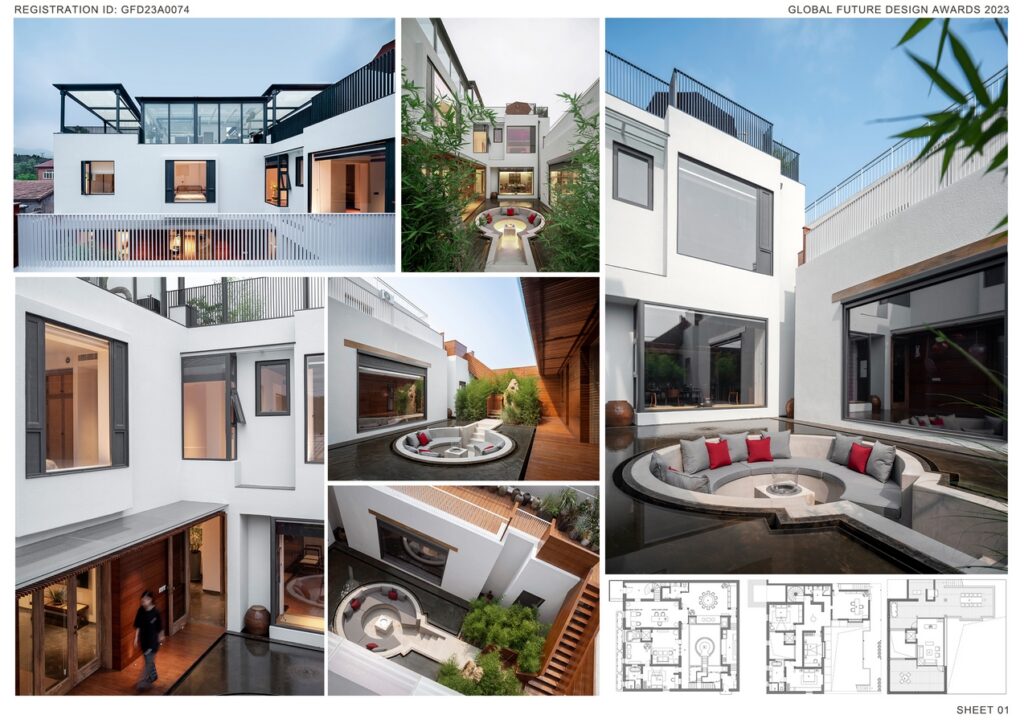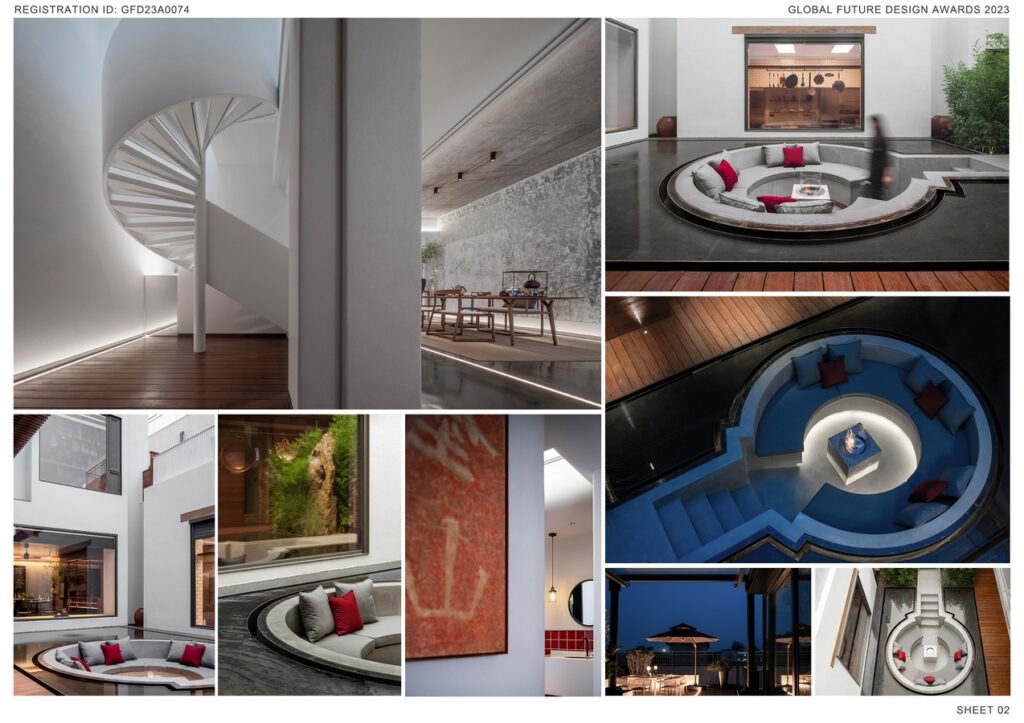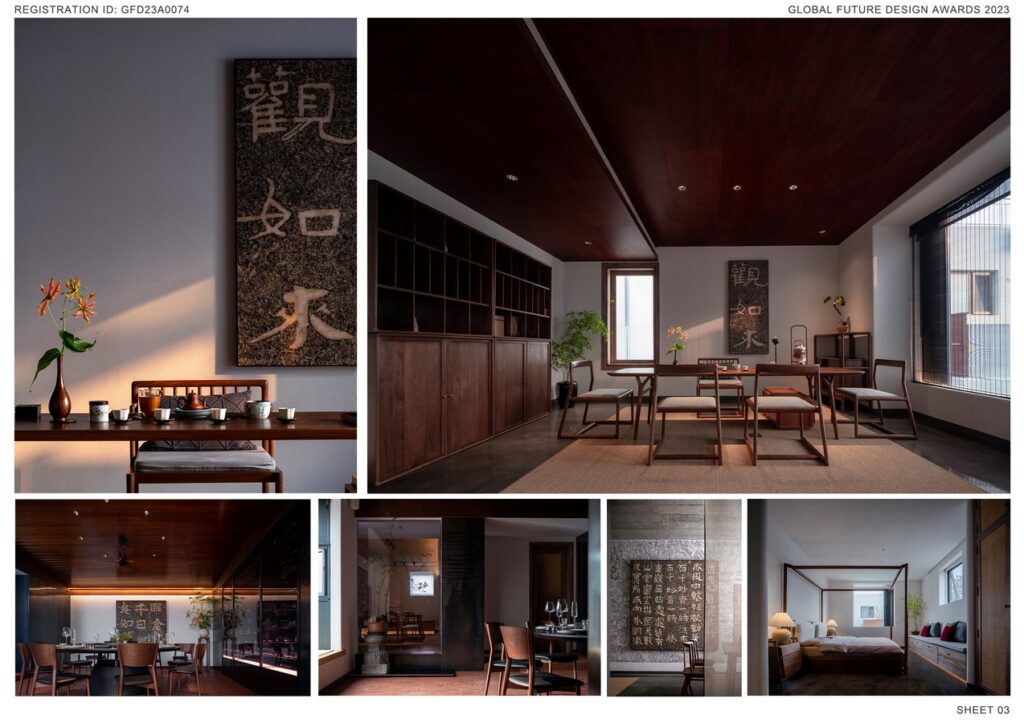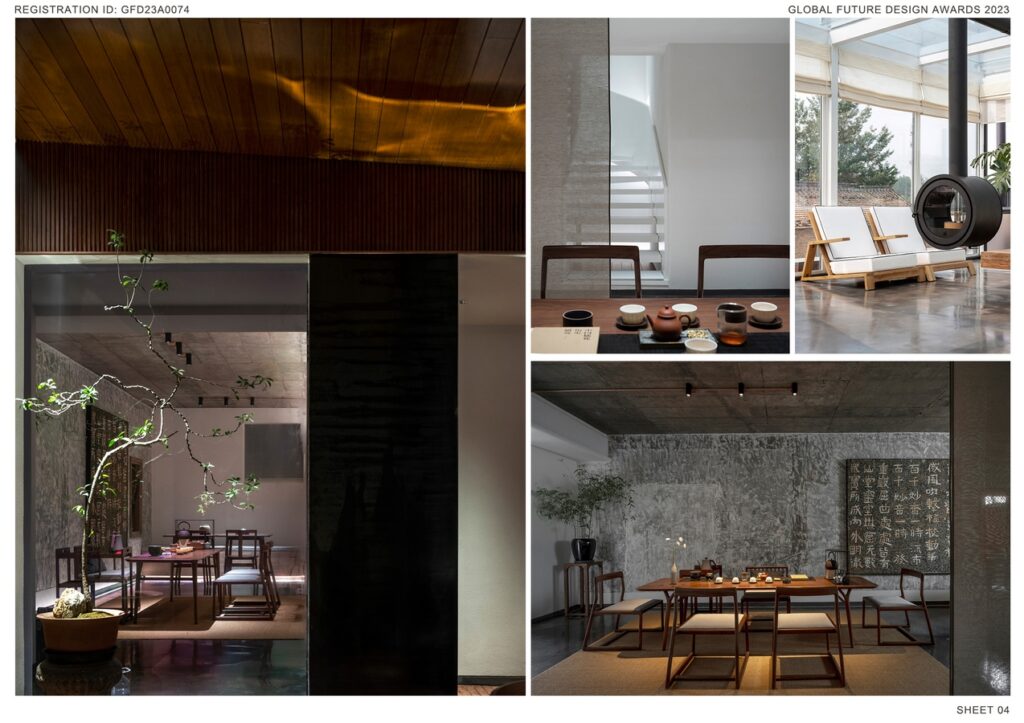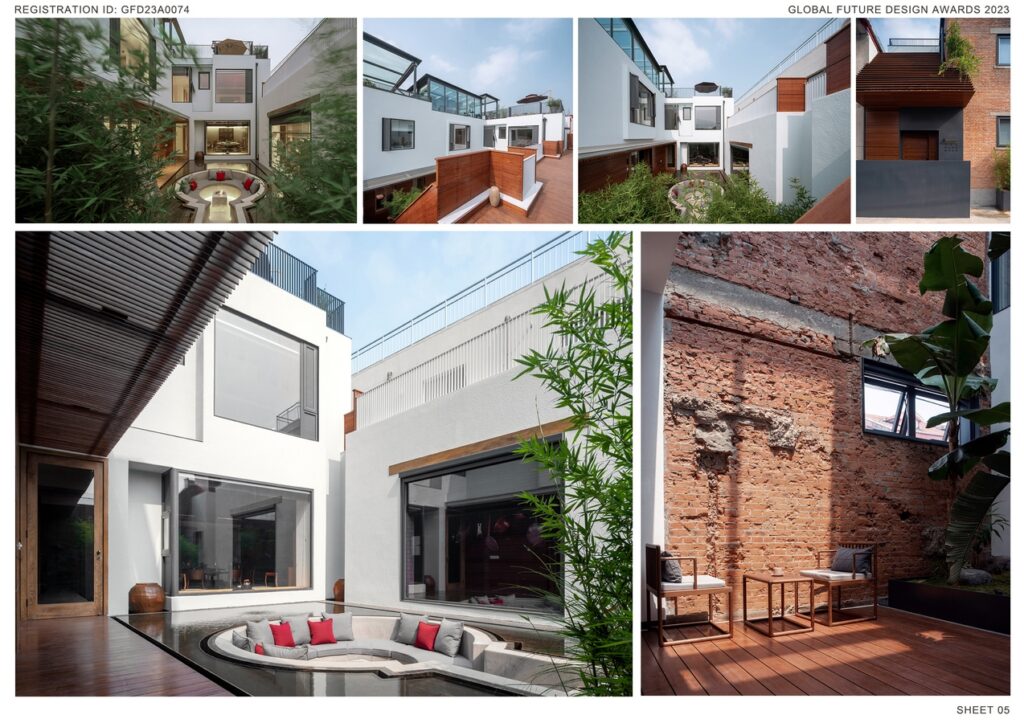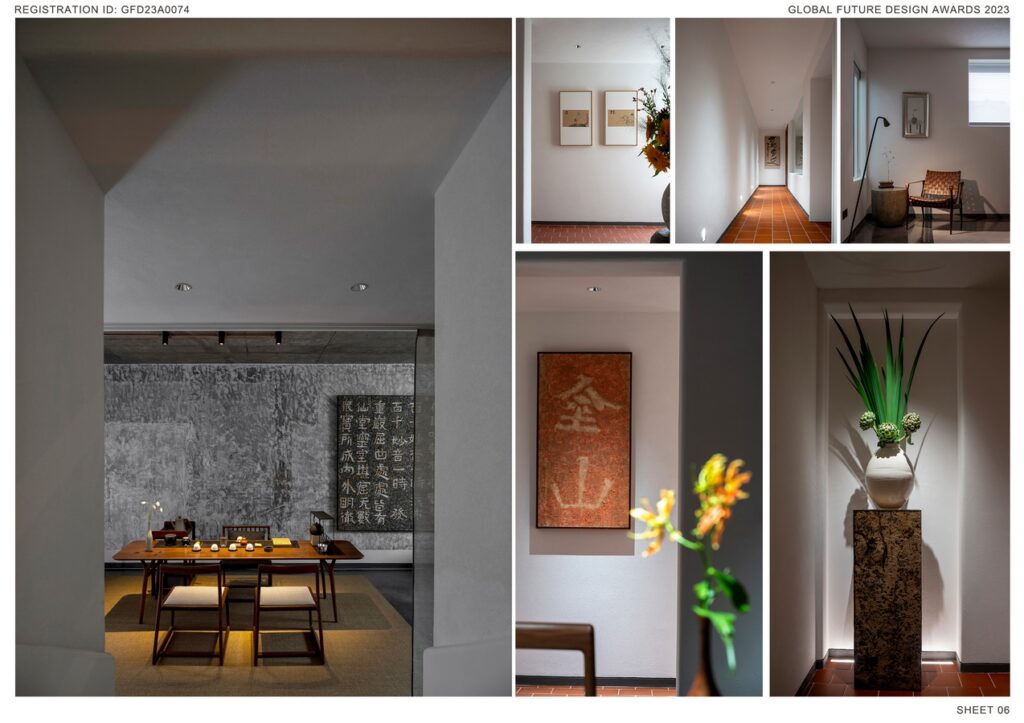Wang Daquan, the designer of Tanzo Space Design was commissioned to complete the landscape and interior design for a two-story house. This red brick building constructed by local workers is no different from other houses in the village. The owner has an open attitude towards the interior design, which allows the complete presentation of Guan Zi Zai. Without any reference because of the maximized freedom, the designer proposed an intervening method without any presupposing purpose, which takes the physical environment and the owner’s habits as the fundamental law and logic. Although slower, this process guarantees the right direction, which has been proven by fact.
Global Future Design Awards 2024: Entries Open!
Take your work to the next level. Register Now…
Gold 🏆 Winner
Global Future Design Awards 2023
Guan Zi Zai House
Private Residential (Built)
Firm
Tanzo Space Design
Architect/Designer
Wang Daquan
Design Team
Tanzo Space Design Team
Project Location
Haidian District, Beijing
Country
China
Photographer/Copyright
©Photographer: Shi Yunfeng
Social Media Handles
Facebook: N/A
YouTube: N/A
Instagram: N/A
Twitter: N/A
Website URL
N/A
II / Taking advantage of the situation
Appropriately
To arrange the air-conditioning pipeline and ventilation, the door head fixed plates form a double-sided slope, which unexpectedly looks like a small tower from a distance, and the owner likes its implied meaning of promoting to a higher position. What’s more, the black half-enclosed wall gives entering the door meaning of approaching and retreating.
This kind of flexible treatment runs through the entire design process, and only when one is in it can one realize that the village is far from static. For example, when the designer was still immersed in the landscape formed by the old roof ridges of the front and rear houses, the front house had already been demolished and become a two-story building with stainless steel railings. In the meantime, the narrow and sloping drainage gap between the two buildings required further adjustment of the interior structure.
A pavilion-like area was inserted in the center of the house, opening up the tense artificial interior space into the environment. Small amount of water was embedded in the sinking area enclosed by cement, among which the children often jump back and forth between the pools in the courtyard. The width of the water is just suitable for children’s stride.
III / Compatibility
Creating experience
From a large-scale perspective, the house itself is the compatibility between practice and outside, so the designer should first make a container to carry them. Windows are open on the side with a view, and the window size is determined according to the landscape. The view of the Xishan Mountain and the river in front of the house pours in from the window, and natural light comes in from the skylight, thus different scenery can be seen on the first and second floors. The window in the kitchen turns the chef into a role on the stage, adding more fun and interaction except for cooking. When one can be seen, one can be respected.
The lines of the interior are firmly held together with the building texture, which supports the entire building together with the red brick and roof that embodies the sensibility and craftsmanship of the 1970s. The partially raw brick wall after demolishing the old staircase and the new white spiral staircase at the entrance constantly exchanged nostalgia and new stories.
From the exterior to the interior, the application of materials extends the sense of respect and rationality. Cement, solid wood, slab, glass, and steel plate are used to create richness and tension through collage and combination. At the same time, nature and the simplicity of the materials are used to control the space atmosphere in a comfortable and appropriate self-consistency. In this way, the design direction is defined by the material limitation.
IV / Improvisation
Surging vitality
Enough room left for materials and nature brings the harmonious integration between space, nature, and people. This dynamic balance makes the space full of vitality.
The sky in Beijing is sometimes gray, and the large area of white walls purifies the palette. A large number of bamboos are planted in the courtyard to represent the East, creating another natural landscape different from the villages and towns, like Beijing versus Jiangnan. Neither sunlight, rain nor sound is not isolated from the outdoor, and the southern canna and northern plants share the flower house together. The boundaries between the old and new, inside and outside, north and south, urban and rural areas are dissolving under the expression that there is room for approaching and retreating.
After the design is completed, the owner often invites friends to walk into the house at different times of the day. Every time he marvels at the unpredictable plant forms and flowing light and shadow; the guests will find a place to sit down as if at home and kids keep inventing new games; such great quiet improvisation is staging there all day long.
Conclusion
“I prefer to pay attention to the spatial characteristics and experience of a place. Using the harmony of space, light, and sound to impress people, without doing it deliberately, can make things have a human nature beyond imagination.”
In addition to the full trust given by the house owner, the workers on site also gave full play to their creativity and worked together with the designer to overcome many complex construction difficulties according to local conditions. Through this creation by the participation of many people, the precious craftsman spirit is outstanding.


